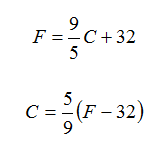Inverse Functions
Introduction
An inverse function is a function that undoes another function, much like addition undoes subtraction. Inverse functions use inverse operations to turn inputs into outputs and vice versa.
 then the inverse function is modeled by
then the inverse function is modeled by  . Since multiplication and division are inverse operations, they will create inverse functions.
. Since multiplication and division are inverse operations, they will create inverse functions.

If a function answers the question: “Alice worked this long; how much money has she made?†Then its inverse answers the question: “Alice made this much money; how long did she work?"
If a function answers the question: “How many hours of music fit on 12 CDs?†Then its inverse answers the question: “How many CDs do you need for 3 hours of music?â€
If a function is modeled by the rule, If a function answers the question: “How many hours of music fit on 12 CDs?†Then its inverse answers the question: “How many CDs do you need for 3 hours of music?â€
A common example of an inverse function is the Celsius-to-Fahrenheit conversion:

where C is the Celsius temperature and F the Fahrenheit temperature.
Substituting the input 100°C into the first function gives an output of 212°F. Inversely, substituting the input 212°F into the second function gives an output of 100°C.